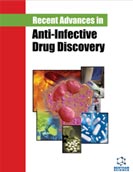Abstract
Introduction: Recent research has been concentrated on investigating the involvement of Toxoplasma gondii (T. gondii) in the progression of liver disorders. This study aims to investigate the prevalence of T. gondii infection in patients with non-alcoholic fatty liver disease (NAFLD), as well as the effects of toxoplasmosis infection on biological biomarkers such as aspirate transaminase (AST), alanine transaminase (ALT), cholesterol (Chol), and triglyceride (Tg) levels in Sistan, southeast Iran.
Methods: A case-control study was conducted between December 2021 and September 2022. The study included 225 patients diagnosed with NAFLD as the case group and 225 healthy blood donors as the control group. The controls were selected from the same region and were matched with the patients based on gender and age. We collected serum samples from all patients and utilized an enzyme-linked immunosorbent assay to analyze them for the existence of anti-T. gondii IgG antibodies. A questionnaire and medical records were utilized to gather data on the patient's demographic factors.
Results: The prevalence of anti-T. gondii IgG antibodies were 68 (30.2%) in patients with NAFLD, whereas it was 11 (4.88%) in the control group. The seroprevalence of T. gondii in NAFLD patients increased in correlation with age (P < 0.001). The prevalence of NAFLD was significantly greater in the seropositive group compared to the seronegative group (P < 0.001). In addition, the levels of the metabolic markers Chol and Tg were significantly higher in T. gondii seropositive NAFLD patients compared to T. gondii seronegative NAFLD patients.
Conclusion: The findings of this study indicate a high seroprevalence of T. gondii in patients with NAFLD. Further studies are warranted to investigate the underlying mechanisms and potential therapeutic implications of this association.






















